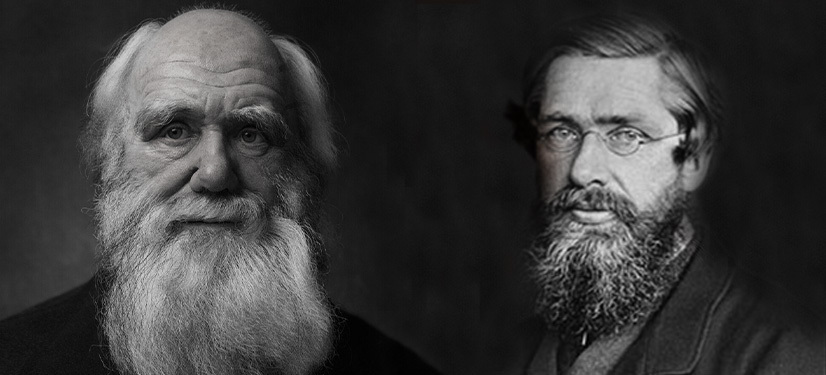
The discovery of a fossil or a relic from our collective past is always exciting news. Not just because it gives us fascinating insights into the world’s history but also because it serves as proof of our evolution.
There are many theories as to how humans evolved, and the most popular (and credible) is the Theory of Evolution by Natural Selection proposed by Charles Darwin and Alfred Russell Wallace.
The groundbreaking evolutionary theory states that all living things have evolved from simple lifeforms like single-celled organisms over the course of millions of years. It also says that evolution took place based on natural selection, which ensured that only the most beneficial genes were propagated.
But did you know that Darwin and Wallace came up with the theory separately and simultaneously? They were also not the first ones to think of it.
Usually, Darwin is solely credited with coming up with the theory of evolution because of his 1859 book, ‘The Origin of the Species.’ However, the theory was the culmination of the work done by many scientists and philosophers before him.
Back in 500 BCE, Anaximander of Miletus, a philosopher and thinker from ancient Greece, theorised that animals and humans evolved from aquatic animals. He proposed that some of the latter came out of the sea onto land years ago, maybe in a cocoon or bark, and then they would then break out of it to take the form of animals.
He also proposed that nature was governed by its own set of laws, thus foreshadowing the idea of natural selection.

In 1831, a young Darwin, who was deeply passionate about biology, set out on a world tour aboard a naval ship and studied the world’s diverse flora and fauna.
From Africa and the islands in southeast Asia to the South American coastline, Darwin noted how every region had a unique ecosystem, which housed unique animals and plants.
He also found fossils of pre-historic animals that helped him develop his theory of evolution, which he kept secret for nearly 20 years.
Around the same time, on the other side of the globe, a scientist by the name of Alfred Wallace developed a similar theory about how animals evolved. Having heard of Darwin and his naturalist theories, Wallace wrote and mailed his evolutionary theory to Darwin. It confirmed Darwin’s own theory and the two decided to publish their hypothesis.
On 1 July, 1858, a summary of the theory of natural selection was presented at the Linnean Society of London, causing massive ripples in the scientific community. And thus, on 20th August of 1858, the ‘Theory of Evolution by Natural Selection’, authored by Darwin and Wallace, was published.
A year later, Darwin published his book ‘The Origin of the Species.’ Needless to say, it forever changed the world, which until then credited the divine for the creation of everything.
Have you heard of ‘survival of the fittest’? It is an idea that out of a group of people in a certain situation, only the fittest can survive. That is the, essentially, the theory of natural selection.
It states that all living things with beneficial traits (like the use of opposable thumbs, strong limbs, etc.) produce more offspring than living things with obsolete traits. This, in turn, means that a species will evolve with the most beneficial traits multiplying and becoming even stronger. And those offspring or species that do not have these traits or have defective genes, will not survive.
We can still see an example of this today, when we see a litter of newborn puppies or kittens. Sometimes, the weakest of the litter dies soon after being born because it doesn’t have the necessary strength or skills to survive.
These traits, according to Darwin and Wallace’s observations, are modified and evolved to suit the species’ environment in the best possible way. For example, a cheetah’s ability to run really fast is dependent on the fact that it lives in regions with vast swatches of open, dry land. An ape’s expert ability to swing from tree to tree depends on the ape living in a forested area full of tall trees.
In short, the theory of evolution by natural selection states that all animals, including humans, have evolved by building on our most beneficial traits for survival in a changing environment. As the environment changes, so do the creatures living in it.
Today, this is the most widely accepted scientific theory, and many scientists have since found more evidence to support it. Scientists are now theorising that due to global warming and technological changes, humans could evolve in an unpredictable manner.
What do you think humans will look like in 50 years’ time? Let us know in the comments below.
Learn more about evolution with ‘Did You Know?’:
When Did Life Begin In The Universe?
Today in Evolution: Elephants Lose Their Tusks!
The evolution of nails and their difference from claws
Madhavi is passionate about everything to do with books, art, literature, films, trivia and food. A former journalist, she believes that asking questions makes life interesting.